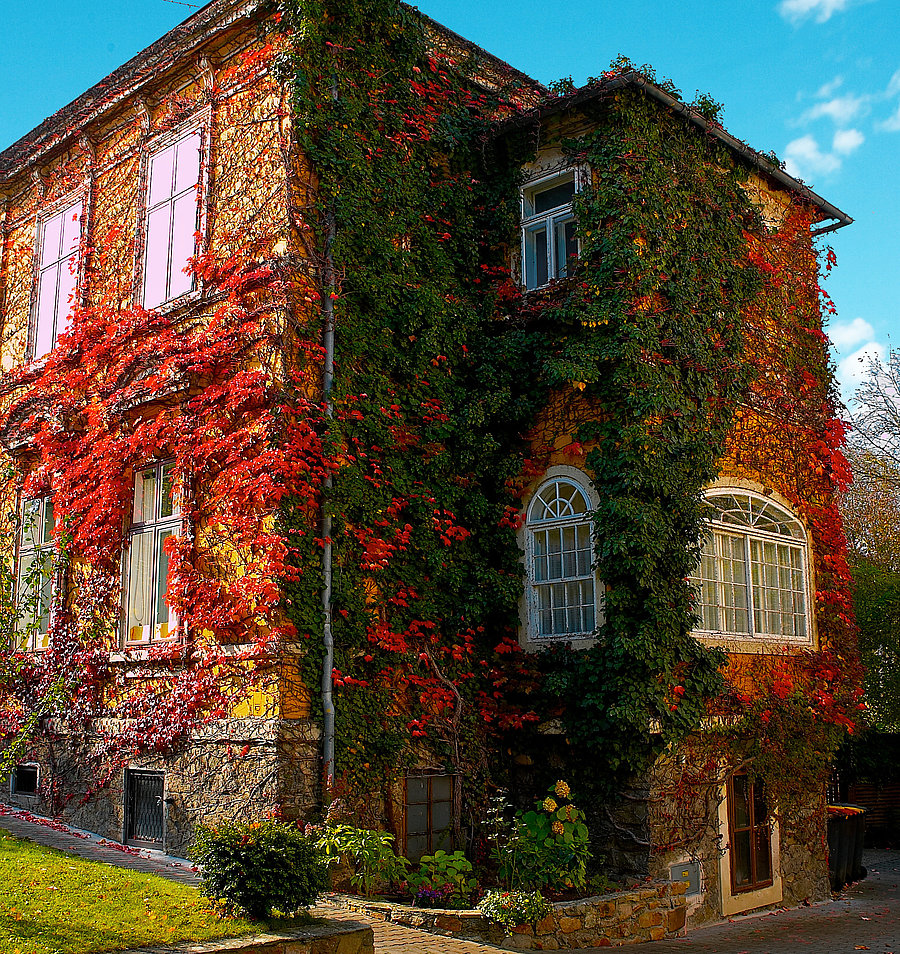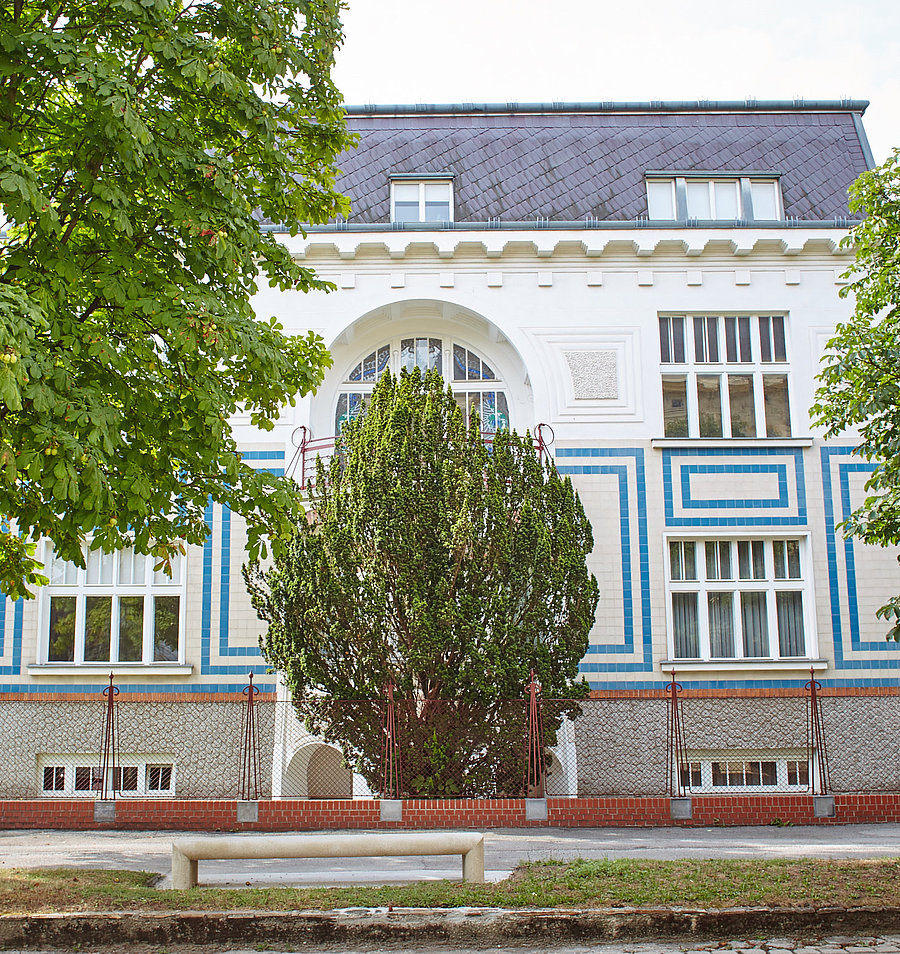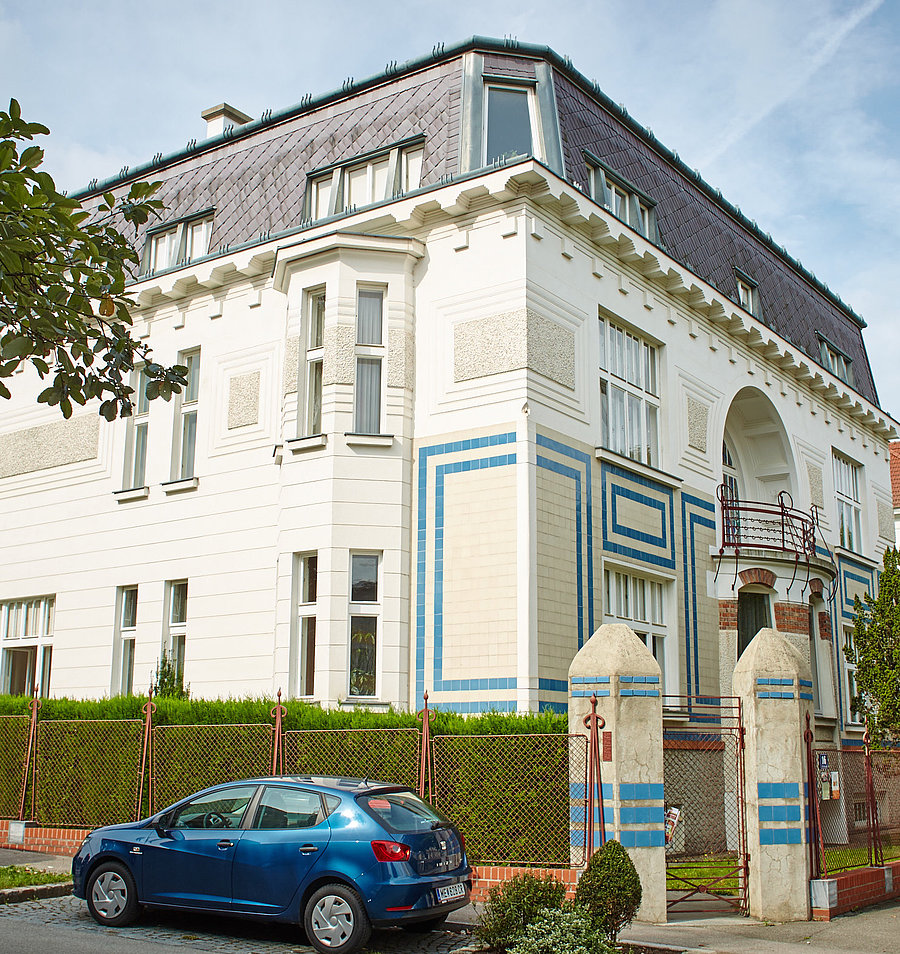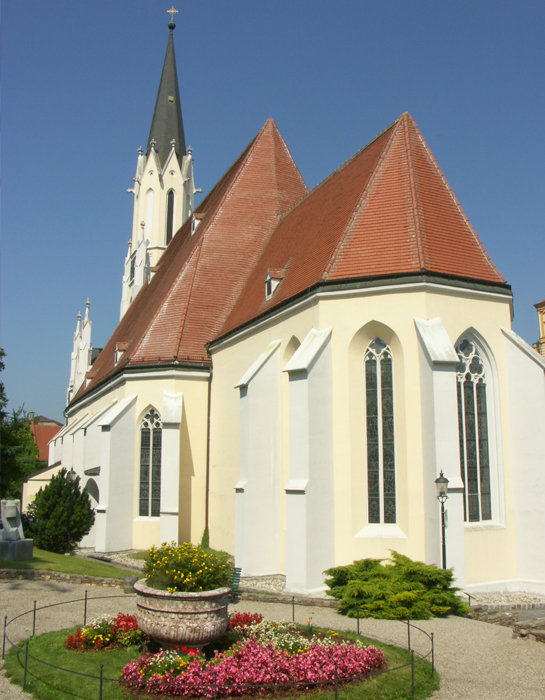Parks and villa districts are typical of the urban development of the Gründerzeit. Such efforts were also made in Melk. Abbot Alexander Karl made the plots of land between the old town and the railroad available for this purpose on favorable terms.
In the western part of the so-called "Stiftsbreite" the city park was created in 1885/86. The eastern part was parceled out by the savings bank. Here, a villa district was to be built along the lines of the Viennese "Cottage-Verein". In 1893, the savings bank commissioned the chief architect of this association, Carl von Borkowsky, to build a "model villa" that was to serve as a model for all further buildings (Abt-Karl-Strasse No. 6). Borkowsky used neo-Gothic stylistic means, while baroque building forms dominate in the following buildings.
As a counter-movement to such historicist buildings, Art Nouveau emerged, which combined asymmetrical, swinging forms with pure geometric ones (Florian Street No. 3). In the heart of the cottage is the Villa Loos by Losimfeldt.
Model house
In 1893, the chief architect of the Viennese "Cottage Association" Carl Ritter von Borkowski (1829-1905) built a model house for the Melk villa district. The building is to be understood as an example for all following buildings in the Melk Cottage. According to the standard plans and patterns of the association, the builder could compose his own villa. There were also different styles to choose from for the facades. The model house follows the neo-Gothic style.
The Loos Villa
In 1901, the notary Dr. Hans Loos von Losimfeldt commissioned the Wagner student Josef Plečnik (1872-1957) to build the villa, giving him complete artistic freedom. The design of the Loos von Losimfeldt villa (1901), bold for its time, signaled the dawn of modernity.
The house, soon to be called "Kachelvilla", goes far beyond Art Nouveau and is one of the most important villa buildings in Lower Austria. The painter and co-founder of the Vienna Secession Ernst Stöhr (1860-1917) had his studio in the attic. Until the 1st World War, the villa was a meeting place for artists.
Two representative columns on Bahnhofstraße, the main axis of the villa district, serve as entrances to the "Melker Cottage".
-
 © Foto: Franz Gleiß
© Foto: Franz Gleiß -
 © Foto: Franz Gleiß
© Foto: Franz Gleiß -
 © Foto: Franz Gleiß
© Foto: Franz Gleiß
 Melk, 7°
Melk, 7°

